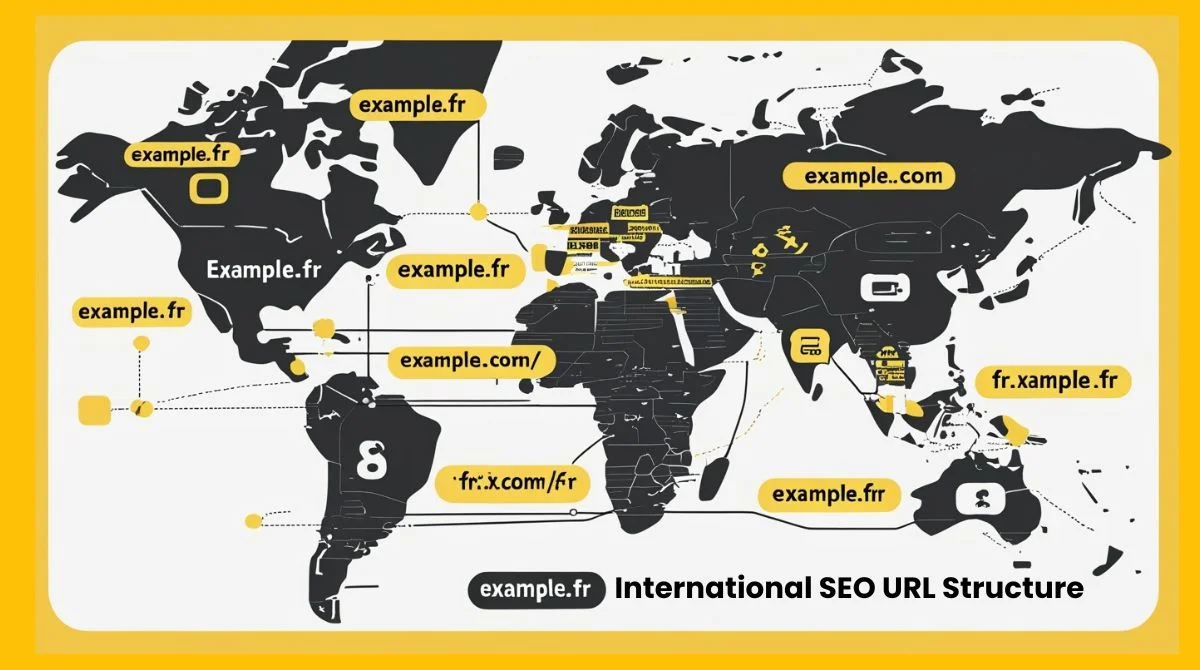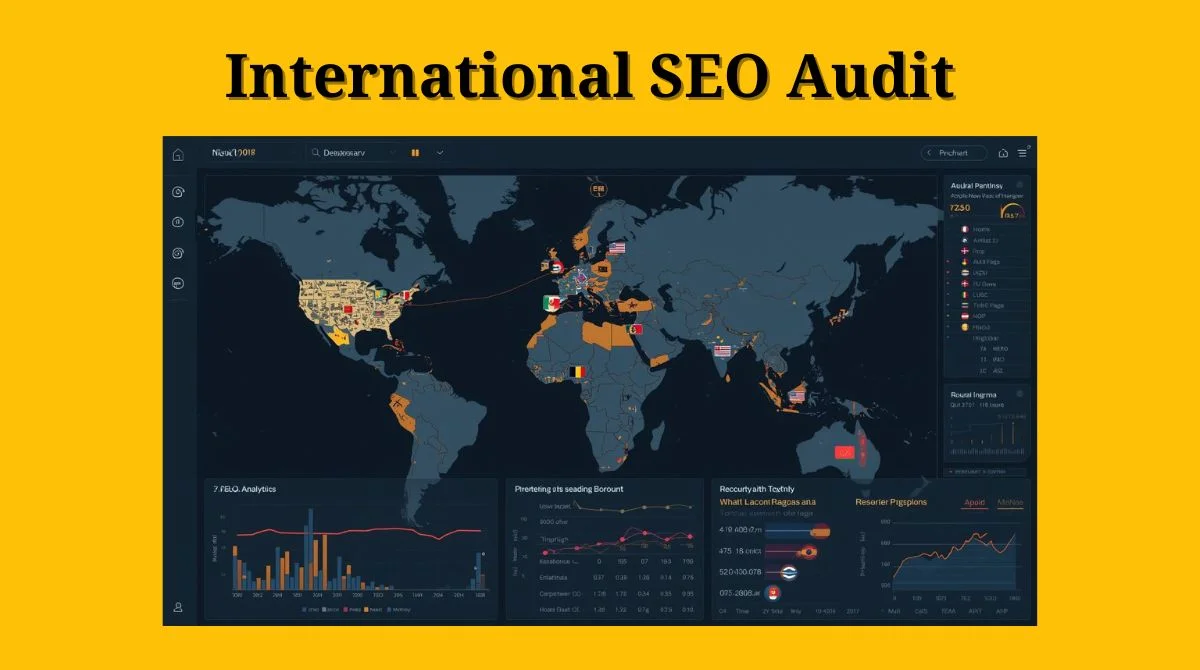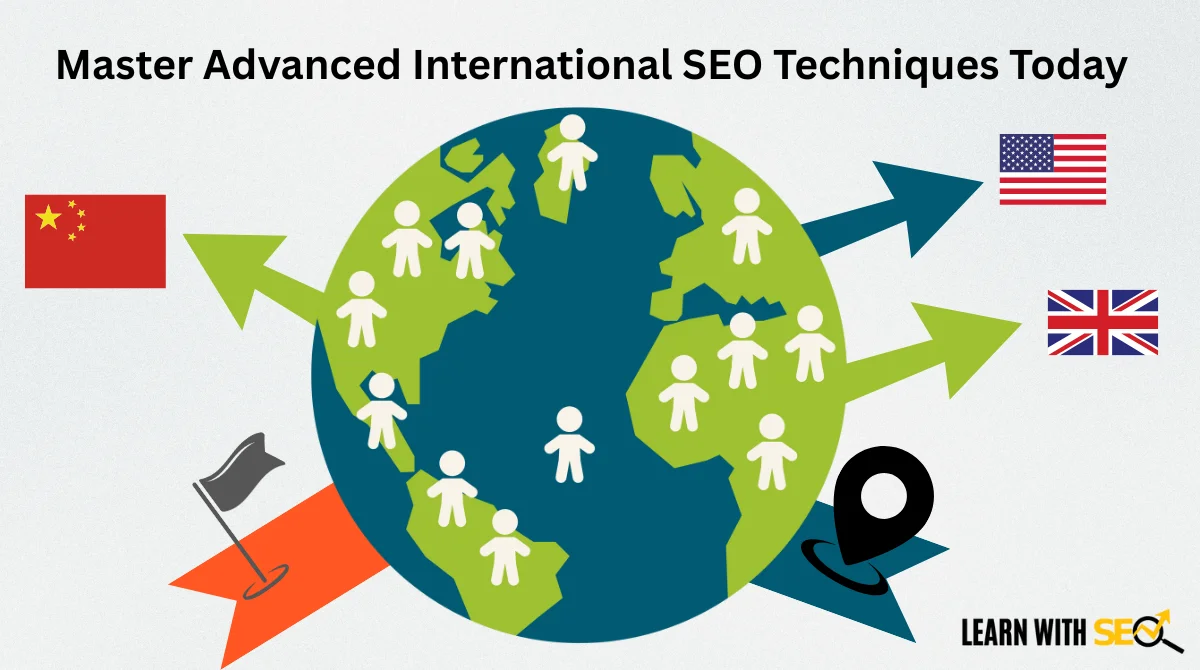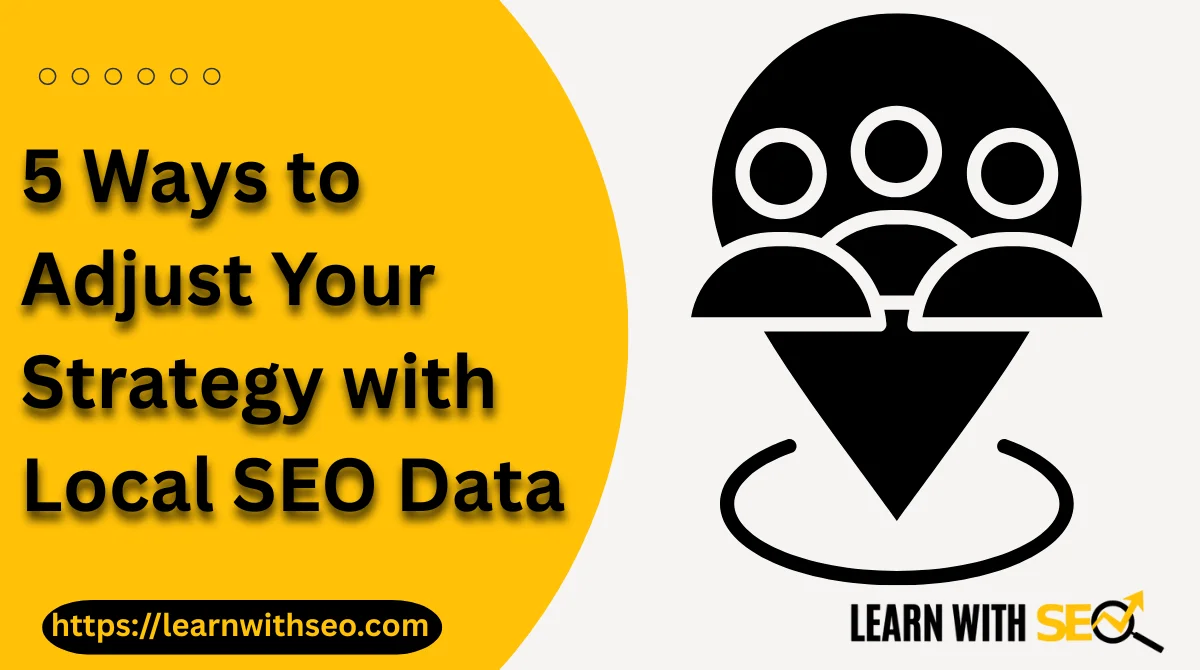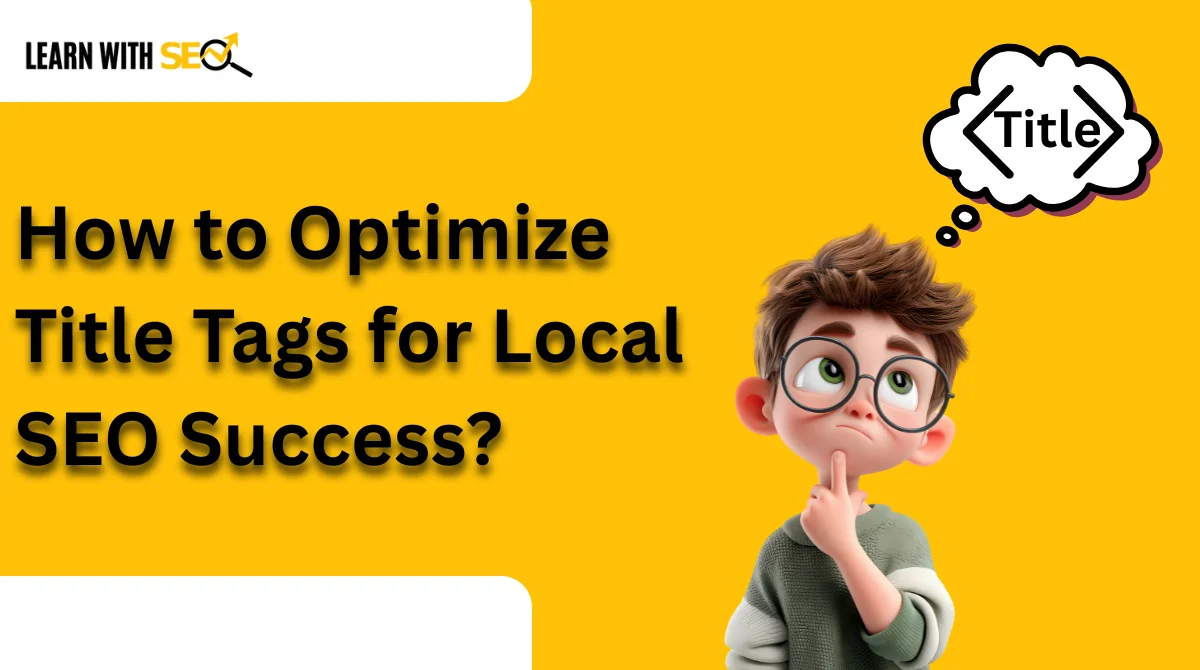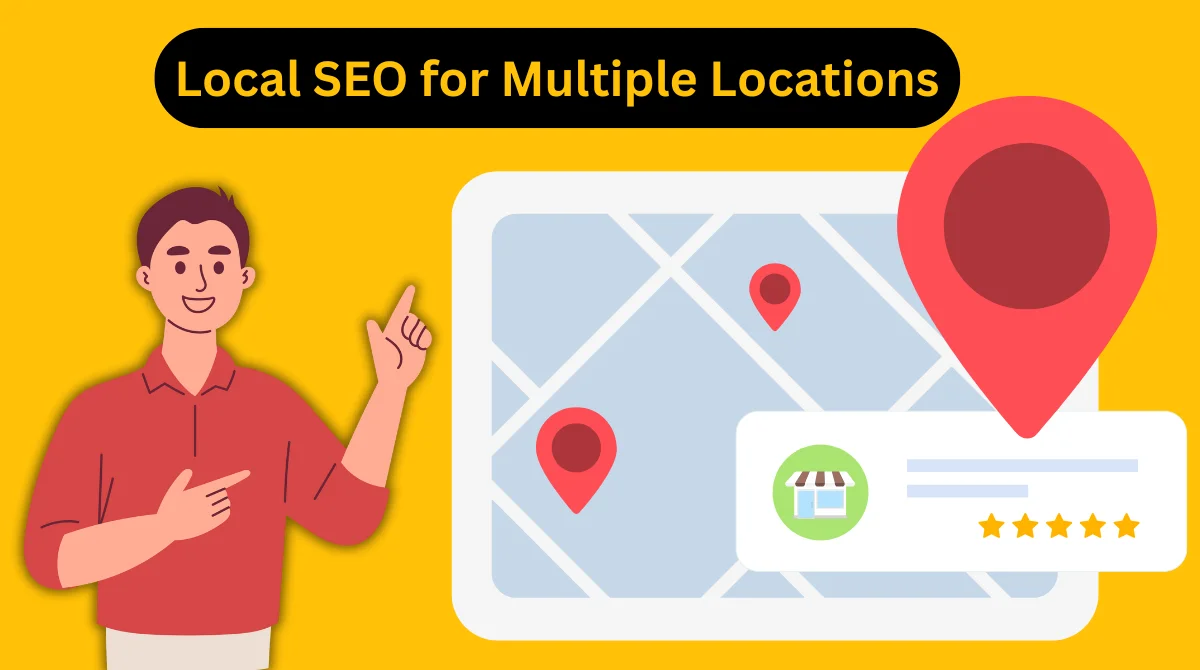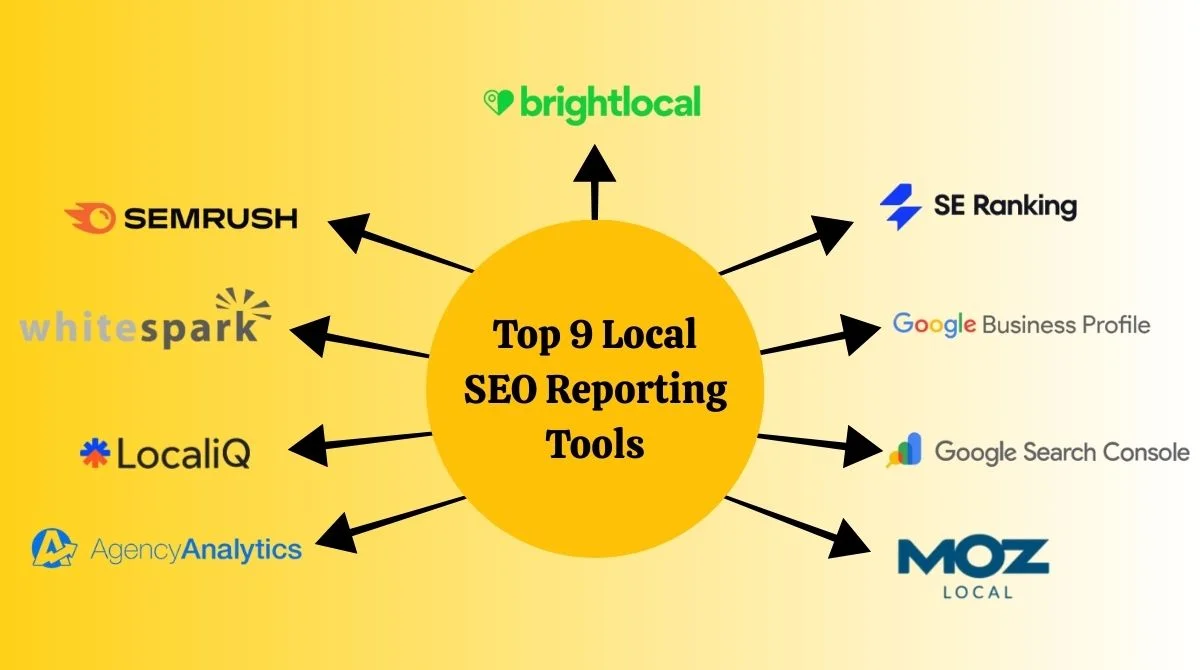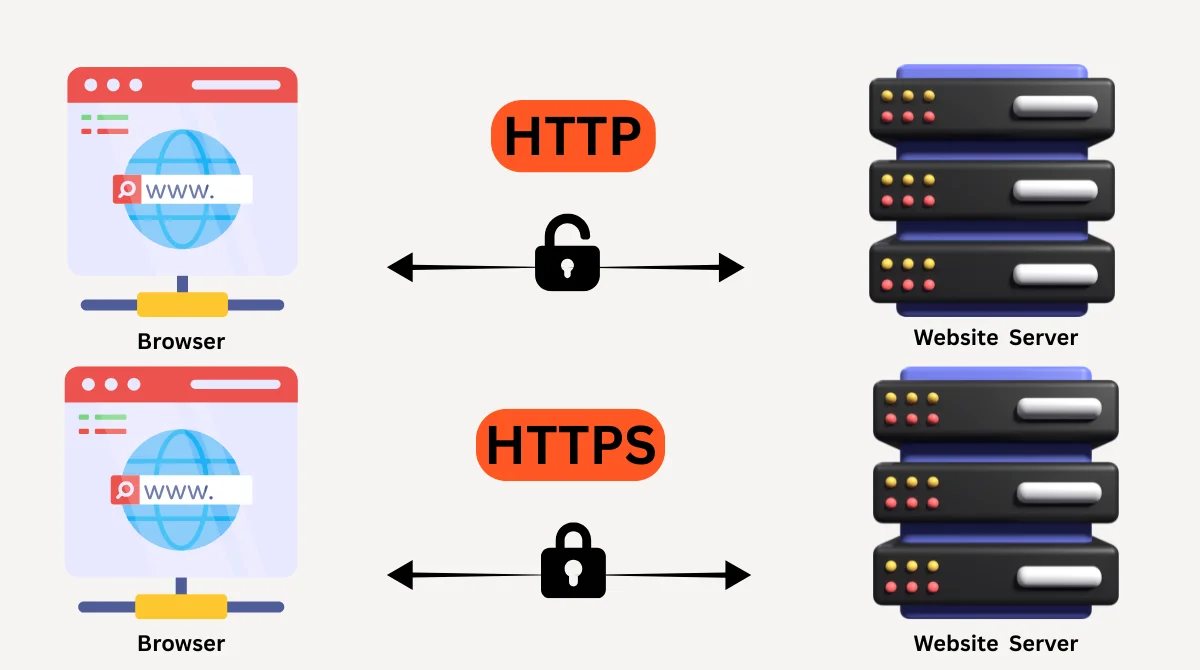Newsletters stand among the most effective tools in digital marketing. They allow businesses, creators, and professionals to connect with their audience in a direct and personalized way. A well-structured newsletter strategy not only strengthens brand trust but also drives traffic, boosts engagement, and increases sales. However, many newsletters fail because they lack clear goals, a consistent structure, or valuable content. To make your newsletters successful, you need a strong content strategy that focuses on your audience and delivers real value.
Why Do You Need a Newsletter Content Strategy?
Before jumping into the “how,” let’s understand the “why.” Sending random emails without planning can quickly annoy subscribers and increase unsubscribes. A newsletter strategy ensures that:
- Your emails have a clear purpose and direction.
- You send content that matches your audience’s needs.
- You maintain consistency in tone, design, and frequency.
- You measure and improve performance over time.
Without a strategy, newsletters often become cluttered, irrelevant, or inconsistent. With a clear strategy, they become a long-term channel for building trust and driving results.
Step-by-Step Guide to Creating an Effective Newsletter Content Strategy
Building a successful newsletter is not about sending random emails; it’s about creating a plan that connects with your audience, delivers value, and achieves your business goals. Below are 10 essential steps explained in detail to help you design and run a professional newsletter strategy.
Step 1: Define Your Goals
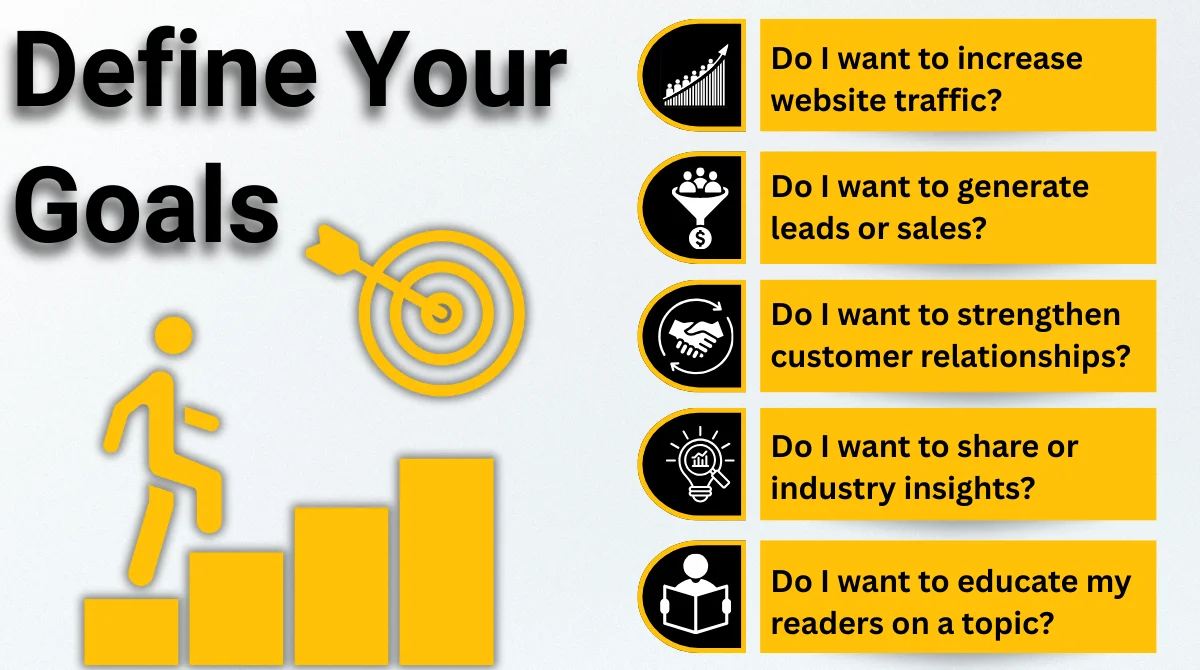
Every good strategy begins with clear goals. Without a clear destination, you can’t know the direction you’re going.
- Do I want to increase website traffic?
- Do I want to generate leads or sales?
- Do I want to strengthen customer relationships?
- Do I want to share company updates or industry insights?
- Do I want to educate my readers on a topic?
Your goals will directly guide the type of content you create, the design you choose, and even the frequency of your emails.
Example:
- If your goal is brand awareness, you might share industry news, expert insights, or thought-leadership articles.
- If your goal is sales, your focus should be on product highlights, discounts, and customer reviews.
Step 2: Understand Your Audience
A newsletter is never about what you want to say, but about what your audience wants to hear. To create valuable emails, build an audience persona. Collect insights like:
- Who are they? (age, profession, gender, interests)
- What challenges are they facing? (lack of knowledge, product comparison, budget)
- What kind of content do they prefer? (educational guides, promotions, stories, case studies)
- When are they most likely to open emails? (morning vs. evening, weekdays vs. weekends)
Example:
- A marketing professional might prefer case studies, strategies, and industry reports.
- A retail shopper may seek out special offers, new product releases, and promo codes.
Step 3: Choose the Right Newsletter Format
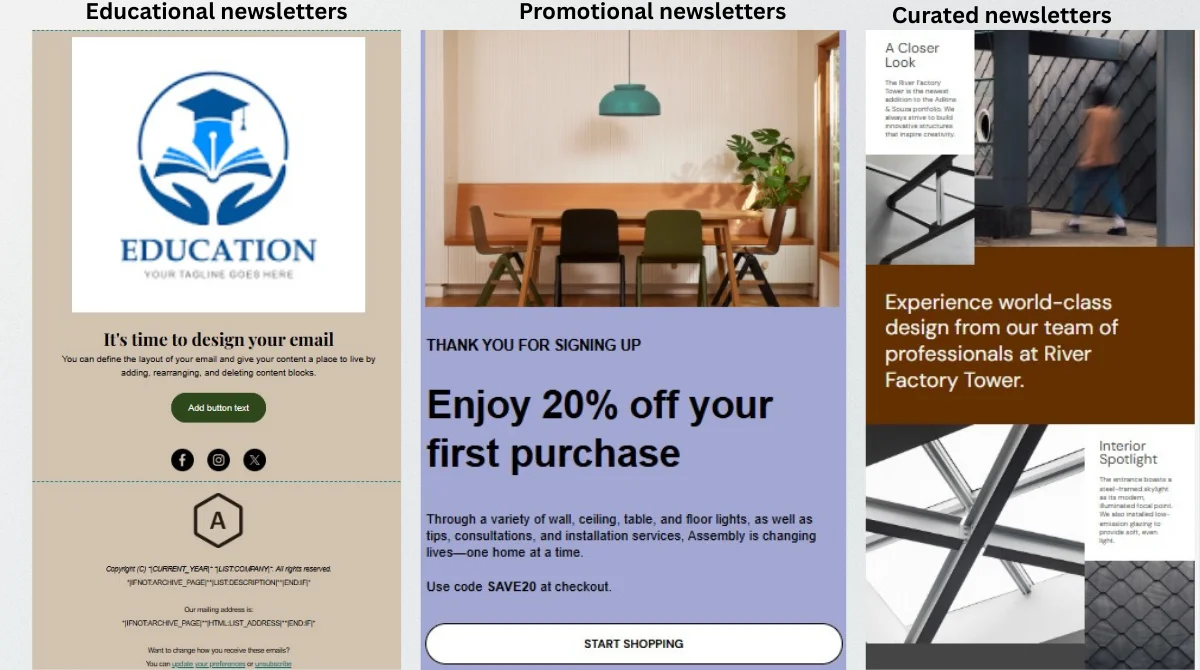
Selecting the right format is crucial, as it defines the overall tone of your newsletter. Your format should align with your goals and what your subscribers want to read. Here are some common types:
- Educational newsletters: Ideal for introducing new concepts. You can share tutorials, how-to guides, or industry tips. Example: “It’s time to design your email.”
- Promotional newsletters: Best for increasing sales. Highlight offers, discounts, or seasonal promotions. Example: “Enjoy 20% off your first purchase.”
- Curated newsletters: Useful if you want to save time for your readers by collecting the best articles, tools, or news from around the web. Example: “Experience world-class design from our team.”
- Company newsletters: Share updates about your brand, such as product launches, upcoming events, or behind-the-scenes stories. Example: “We’re opening a new branch in Toronto!”
- Storytelling newsletters: Build emotional connection by sharing customer success stories, your personal journey, or brand values. Example: “How one customer doubled sales using our service.”
Expert Tip: Pick 1–2 formats and stick with them. For instance, if people signed up for learning tips and then suddenly switch to only promotions, this breaks trust.
Step 4: Plan Your Content Calendar
Planning avoids last-minute stress and ensures quality. A content calendar helps you stay organized. Include:
- Topic ideas: Based on audience needs and seasonal trends.
- Key messages: The single takeaway of each email.
- Frequency: Weekly, bi-weekly, or monthly (choose and stick to it).
- Special campaigns: Holidays, product launches, webinars, or big events.
Example 1-month calendar:
- Week 1: Blog highlights + tips
- Week 2: Customer success story
- Week 3: Seasonal discount
- Week 4: Industry insights
Step 5: Write Engaging Subject Lines
Your subject line is the first impression. If it fails to grab attention, your email is less likely to be opened.
Tips for subject lines:
- Leverage curiosity → for instance: ‘Could you be making these 3 common mistakes?
- Show value → “5 tips to save money this week”
- Add urgency → “Last chance: 30% off today only”
- Make it personal → “Hi Sarah, here’s something special for you”
Expert Tip: Keep subject lines under 50 characters and avoid spammy words like “FREE!!!”
Step 6: Create Valuable and Easy-to-Read Content
Your readers open emails for value, not for ads. Keep your writing conversational and break up long paragraphs to avoid heavy text blocks.
Best practices:
- Start with a short, friendly intro.
- Focus on one main idea per email.
- Provide actionable tips, insights, or offers.
- Add visuals like images, GIFs, or videos.
- End with a strong CTA → (Read More, Shop Now, Register Today).
Example: Instead of saying “We have a new course”, say “Learn SEO step-by-step with our new 6-week course. Enroll today.”
Step 7: Maintain Consistency
Consistency is one of the most important parts of a successful newsletter strategy. When people subscribe, they form an expectation about how often they will hear from you and what type of content they will receive. Frequent changes in your schedule or style can cause readers to lose interest or unsubscribe.
For example:
- If you promise a weekly newsletter, then send it every Monday at the same time so your audience starts expecting it.
- If you run a monthly digest, stick to sending it on the first Friday of every month.
Why this matters:
- Builds trust: People know you are reliable.
- Improves engagement: Subscribers look forward to your emails.
- Strengthens branding: Regular updates keep your brand fresh in their minds.
Expert Tip: Don’t overdo it. Sending too many emails can feel spammy and push people away. For many businesses, sending 1–2 emails a week hits the ideal balance.
Step 8: Personalize the Experience
Generic newsletters feel robotic. Personalization makes readers feel valued.
Ways to personalize:
- Use the subscriber’s first name in the subject line and greeting
- Recommend products based on purchase history
- Send event invites based on location
- Use segmentation for different interest groups
Example: An online store can send different newsletters to “electronics buyers” and “fashion buyers.”
Step 9: Optimize for Mobile Devices

With 60–70% of users checking emails on mobile, your newsletter must look great on every screen.
Checklist for mobile optimization:
- Font size: 14px or bigger.
- Images: compressed and responsive.
- Buttons: large enough to tap easily.
- Layout: single-column format.
Step 10: Measure and Improve Performance

What gets measured gets improved. After sending, check your analytics:
- Open rate: how many people opened the email
- Click-through rate (CTR): the percentage of people who clicked on a link.
- Conversion rate: how many completed the action (purchase, signup)
- Unsubscribe rate: how many left your list
Example:
- Low open rates? Focus on optimizing your subject lines.
- If CTR is low, → Improve CTA placement
- If unsubscribes are high → Balance promotion and education
Best Practices for Long-Term Success
Beyond the steps above, here are some best practices to keep your newsletters strong in the long run:
- Make sure to test your emails before sending them out, check spelling, design, and links. Keep a balance between promotional and helpful content.
- Clean your email list regularly to remove inactive subscribers.
- Follow privacy regulations (GDPR, CAN-SPAM).
- Ask for feedback from subscribers to improve content.
Conclusion
An effective newsletter content strategy is more than just sending emails; it’s about building relationships. By defining your goals, understanding your audience, planning valuable content, and continuously improving through data, you can create newsletters that people look forward to reading.
Remember, your subscribers invited you into their inbox. Respect that space by sending useful, engaging, and well-designed content. With time, your newsletter can become one of the most powerful assets for your business growth.


